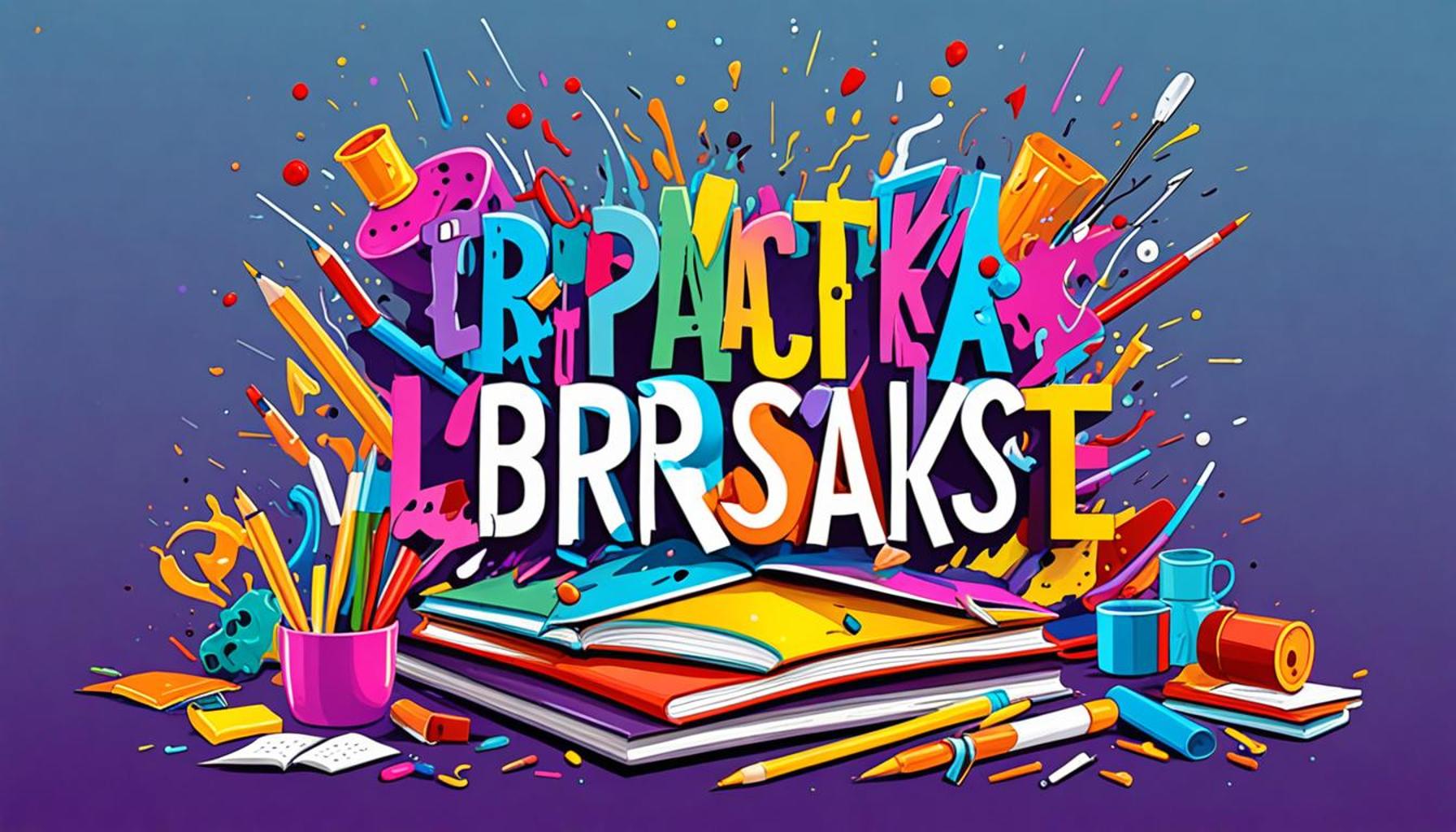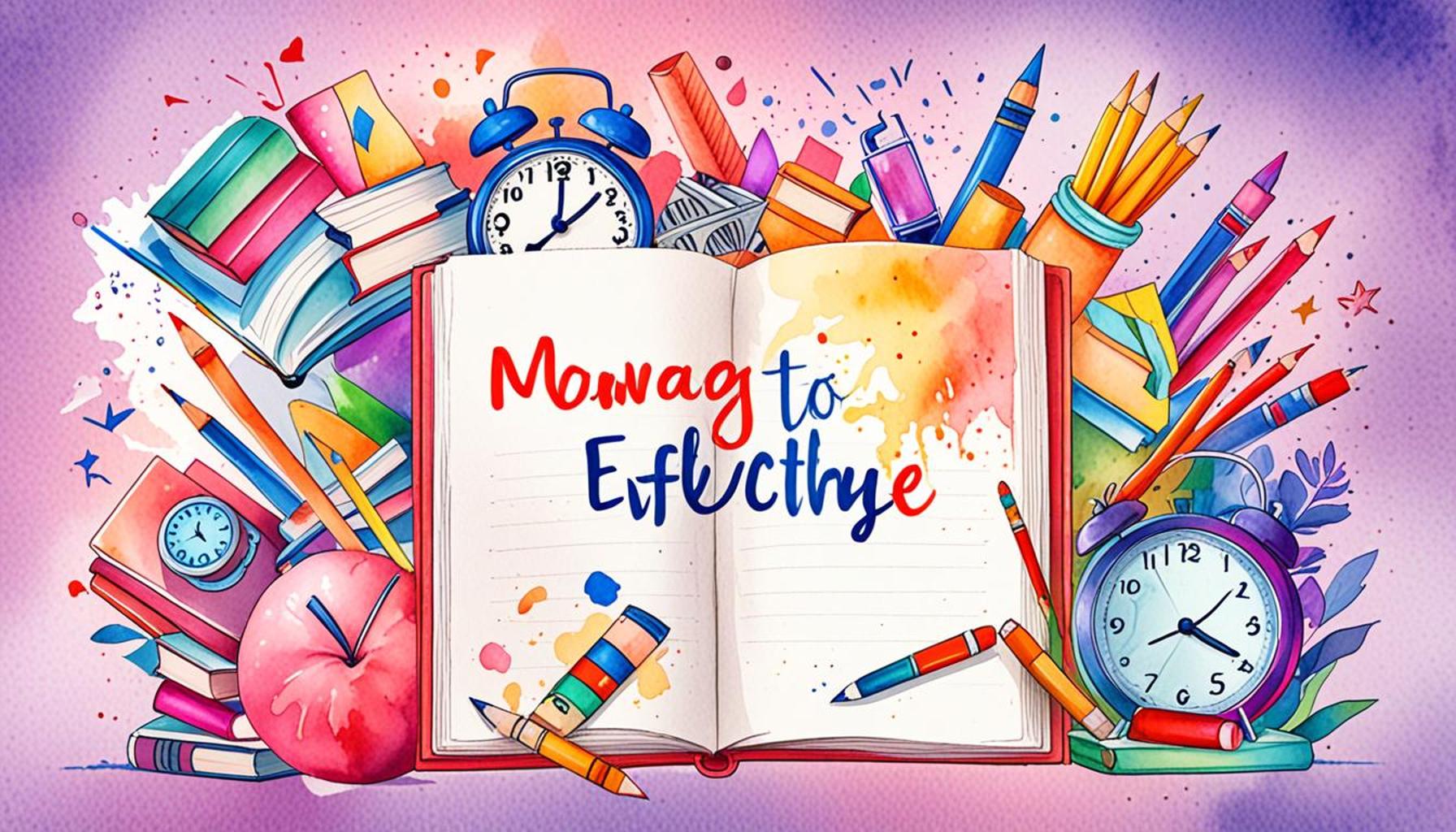The Impact of Breaks on the Learning Process Boost Retention Focus

Embracing Breaks for Enhanced Learning Outcomes
In the pursuit of effective education methods, the significance of taking breaks is an essential yet frequently neglected aspect. Numerous studies underscore that integrating short pauses into learning sessions can profoundly impact both retention of information and overall focus. For students, educators, and professionals in Nigeria and beyond, grasping this principle could transform educational experiences.
Let’s consider some of the fundamental advantages that breaks can offer:
- Improved Memory Retention: Research has shown that brief interruptions during studying can significantly assist in transferring information from short-term to long-term memory. For example, the Pomodoro Technique, which involves studying for 25 minutes followed by a 5-minute break, has been found effective among students in various educational settings. This method allows the brain to encode information while providing a time to relax, thereby reinforcing learning.
- Enhanced Concentration: Mental fatigue can become a significant barrier to effective learning, especially in engaging subjects like mathematics or science. Implementing regular breaks can act as a reset button for the mind, allowing learners to come back with renewed focus and energy. Both learners in Nigerian classrooms and professionals in the bustling corporate world can benefit from this practice, transforming how they approach challenging tasks.
- Increased Creativity: Pausing work provides the mind with a moment to breathe and wander, which can spark creativity. Stepping away from a problem—literally and figuratively—can lead to new insights and innovative solutions. For instance, Nigerian tech entrepreneurs benefit from breaks as they brainstorm solutions to local challenges, fostering a vibrant culture of creativity.
In Nigeria, where educational systems are evolving rapidly to meet global standards, the idea of strategic breaks could be a game changer. Picture a classroom buzzing with excitement where students engage in activities only to take intentional breaks that refresh their minds. Perhaps educators could encourage students to engage in light physical activity or partake in short discussions during these breaks. This could facilitate a more dynamic and interactive learning environment, potentially leading to improved outcomes.
This exploration aims to discuss how the use of breaks can be optimized to maximize the learning experience. Are educational institutions truly harnessing the potential of breaks to bolster learning effectiveness? The aim here is to examine substantial evidence and consider the broader implications of taking breaks while learning, ultimately leading to a discussion about best practices in schools and workplaces alike.
CHECK OUT: Click here to explore more
Understanding the Science behind Breaks in Learning
The connection between breaks and cognitive performance is rooted in extensive psychological research, shedding light on how the brain processes and retains information. As educational methodologies evolve, particularly in Nigeria’s dynamic classroom settings, recognizing the scientific benefits of breaks can alter the way students learn. Studies have consistently demonstrated that the brain functions optimally when not subjected to prolonged periods of concentration. Research conducted by the University of Illinois found that students who took regular breaks during study sessions performed 20% better on tests than those who didn’t incorporate downtime. This statistic highlights the necessity of breaks in enhancing cognitive function and solidifying memory retention.
Moreover, the phenomenon known as the “spacing effect” reveals that distributing learning over time, with breaks in between, can significantly enhance retention. When learners study in shorter bursts rather than in marathon sessions, the brain has time to process, organize, and integrate information. By allowing for brief intermissions, students can avoid cognitive overload, which often leads to diminishing returns in learning effectiveness. The application of this principle in Nigerian schools could be transformative; imagine classrooms where young minds are empowered to learn effectively through strategic pauses.
The Role of Breaks in Retention and Focus
In practical terms, short breaks can take various forms, including:
- Physical Activity: Engaging in light exercises between study sessions not only energizes students but also increases blood flow to the brain, enhancing cognitive function. For instance, a quick session of jumping jacks or stretching can invigorate pupils and significantly improve their focus upon returning to the task at hand.
- Mental Diversions: Encouraging students to participate in quick, unrelated cognitive tasks—like solving a riddle or practicing mindfulness—during breaks can sharpen their mental acuity. This practice helps in temporarily relieving the brain from the strain of intensive study.
- Social Interactions: Chats and discussions with peers during breaks can foster a sense of community and connection, which is particularly valuable in Nigerian educational contexts where collaboration is a key component of learning.
Educational leaders in Nigeria, by implementing structured break times, have the opportunity to promote a culture that prioritizes mental health alongside academic success. The integration of these strategic breaks not only caters to greater academic achievement but also fosters a more engaged and resilient student population.
As we delve deeper into this topic, one must question—are current educational practices truly optimizing the potential benefits of breaks? This inquiry is essential, as it can identify gaps and lead to actionable insights, ultimately shaping educational efficacy and fostering an enriched learning environment across Nigeria.
In the realm of education, understanding how breaks influence cognitive performance is crucial for both students and educators. Numerous studies indicate that incorporating short breaks during learning sessions can significantly enhance information retention and focus. This phenomenon can be attributed to several cognitive mechanisms that operate during rest periods.
For instance, taking breaks allows the brain to consolidate information, a process essential for memory formation. During these intermissions, neural connections strengthen, making retrieval of learned material easier in the future. Moreover, pauses provide an opportunity for mental rejuvenation, reducing fatigue and enhancing overall engagement in learning activities. Instead of feeling overwhelmed, students can approach tasks with renewed vigor.
Additionally, research demonstrates that even brief periods of rest can improve problem-solving skills. When faced with challenging materials, a quick break can help the brain undergo a process known as “incubation”, where ideas continue to develop subconsciously. This process enables learners to return with fresh insights, leading to more effective strategies and creative solutions.
Furthermore, by structuring learning around intervals of activity and rest, educators can foster a more adaptable classroom environment. Implementing strategic breaks not only enhances student performance but also encourages a culture of well-being, where mental health is prioritized. This approach acknowledges the reality that concentration fades over time and underscores the importance of physiological and psychological needs in the learning process.
| Category | Benefits |
|---|---|
| Cognitive Development | Enhances information consolidation and retention of knowledge. |
| Mental Rejuvenation | Reduces mental fatigue and increases engagement in learning. |
| Problem-Solving Enhancement | Promotes creative thinking through subconscious idea development. |
| Boost in Well-Being | Prioritizes mental health, fostering a healthier learning environment. |
By recognizing the profound impact that breaks can have on learning processes, both students and educators can strive for a balance that maximizes potential and retains focus. This shift in perspective could ultimately lead to improved learning outcomes and a more enriching educational experience.
SEE ALSO: Click here to read another article
Enhancing Learning Through Strategic Break Interventions
To fully appreciate the transformative power of breaks in learning, it is essential to explore the various strategies educators and students can employ to maximize their effectiveness. Breaks are not simply pauses in the academic timeline; they are strategic interventions that can revitalize the learning process. Properly implemented, these breaks can significantly enhance retention and focus.
Types of Breaks and Their Benefits
Different types of breaks can cater to various learning styles and preferences, thereby promoting an inclusive educational approach. Here are several forms of breaks that educators may consider:
- Active Breaks: Engaging in physical activities during breaks has shown remarkable benefits in boosting cognitive performance. For example, a study published in the journal Psychological Bulletin illustrated that physical movement—like dancing or even a brisk walk—can elevate mood and increase brain function. For schools in Nigeria, short, structured outdoor activity sessions could help re-energize students, thereby fostering an environment conducive to learning.
- Creative Activities: Incorporating artistic breaks, such as drawing or playing a musical instrument, can stimulate different areas of the brain, promoting creativity while simultaneously giving a mental rest. This type of break encourages students to think outside the box, a vital skill in today’s fast-paced world.
- Mindfulness and Relaxation: Mindfulness techniques such as guided meditation or simple breathing exercises can significantly reduce anxiety and stress. Studies indicate that just a few minutes of mindfulness practice can enhance attention span and improve overall cognitive function. These methods are particularly relevant in Nigeria, where students often face pressure from academic demands and societal expectations.
By combining these methods, educators can create a more holistic learning experience that not only maintains student engagement but also enhances their ability to retain information.
The Cultural Context in Nigerian Education
The integration of effective break strategies is even more crucial when considering cultural dynamics within Nigerian education. Traditional educational approaches often emphasize prolonged study sessions, sometimes neglecting the importance of restorative breaks. However, recognizing the diverse backgrounds of students across Nigeria can lead to a rich blend of breaks that cater to various learning needs. For instance, integrating local games or storytelling during break times can reinforce cultural identity while providing mental respite.
Moreover, access to technology can also transform how breaks are perceived and utilized in learning environments. With the rise of mobile applications focused on brain games and mental challenges, educators can leverage these tools to provide enriching break experiences. Such innovations enhance student engagement and contribute to improved academic outcomes.
In practical applications, schools that adopt structured breaks witness not only enhanced individual performance but also greater collaboration among students. An analysis by the National Education Association revealed that students interacting in informal settings tend to show increased problem-solving skills and creativity in academic work. Thus, breaking down barriers, both physically and mentally, can lead to a more collaborative and efficient learning environment.
As educational stakeholders in Nigeria consider the revolutionary impact of breaks on learning processes, it becomes pivotal to ask how these strategies can be scaled to reach each classroom effectively. Such methodologies can potentially pave the way for a future where academic success pairs seamlessly with mental wellness, optimizing the learning experience for all students.
CHECK OUT: Click here to explore more
Conclusion: Embracing Breaks for Optimal Learning
In conclusion, the impact of breaks on the learning process cannot be overstated. As we have explored, implementing strategic breaks—whether through physical activity, creative expression, or mindfulness practices—can significantly enhance students’ retention and focus. These breaks serve not merely as pauses but as essential components of an effective learning strategy, particularly in the diverse educational landscape of Nigeria.
The cultural context within which Nigerian students learn emphasizes the necessity of integrating localized break activities that honor their backgrounds and experiences. By weaving in traditional games or storytelling into break time, educators can not only elevate the learning experience but also foster a sense of identity among students. Furthermore, leveraging technology, such as brain games and educational apps, can serve to enrich these break periods, making them both enjoyable and beneficial.
As schools and educators reflect on the findings regarding breaks and cognitive performance, the challenge lies in creating frameworks that effectively incorporate these methods into daily learning practices. Structuring breaks thoughtfully will not only improve individual academic performance but can also cultivate collaboration and creativity, leading to a more vibrant educational environment.
Thus, as we rethink conventional teaching methods, it becomes crucial to prioritize the importance of breaks in the academic journey. Recognizing and implementing these interventions could well be the key to unlocking the full potential of learners across Nigeria and beyond, ultimately enhancing both their academic success and mental wellbeing.


